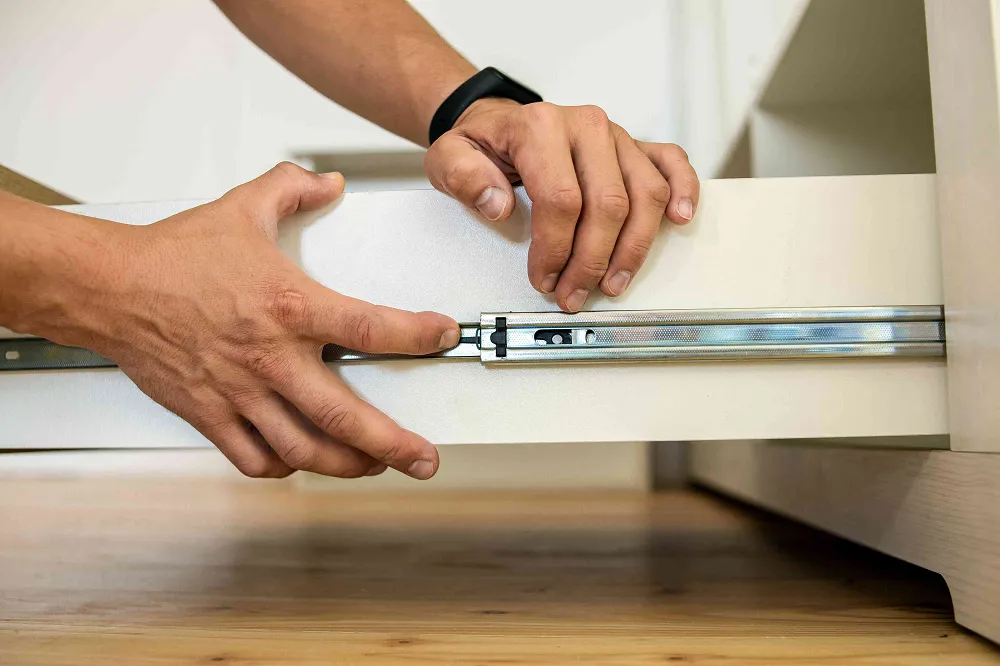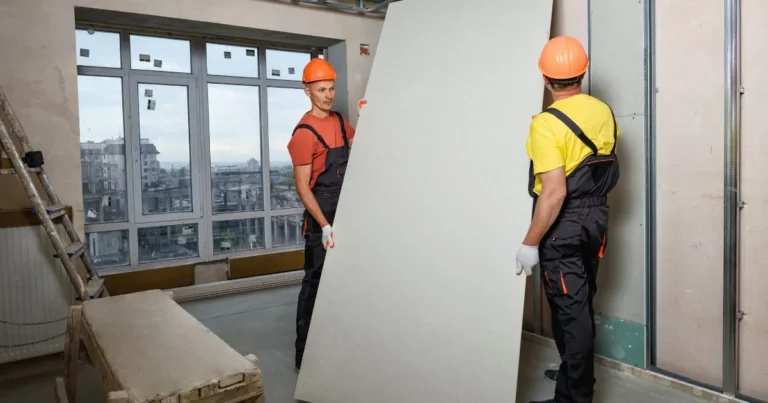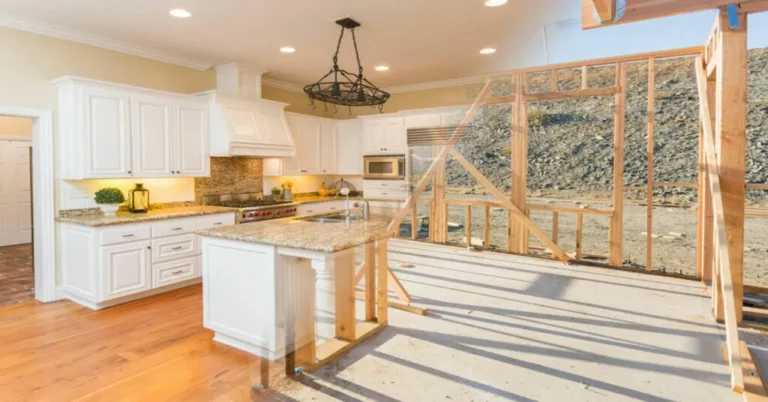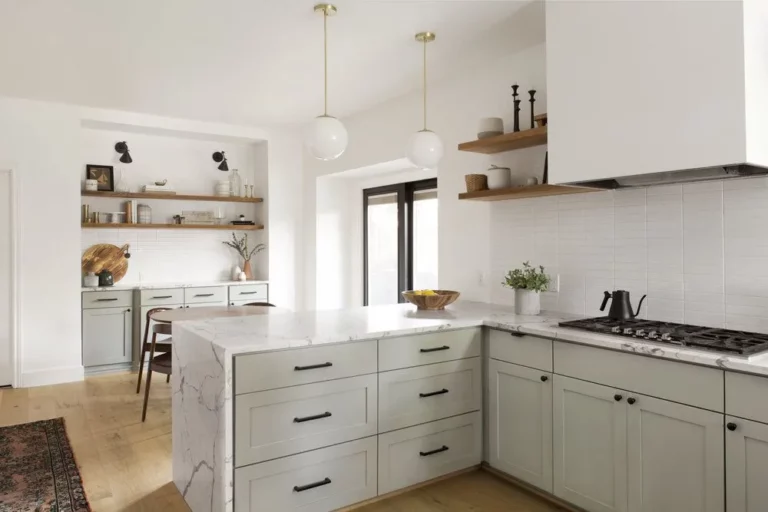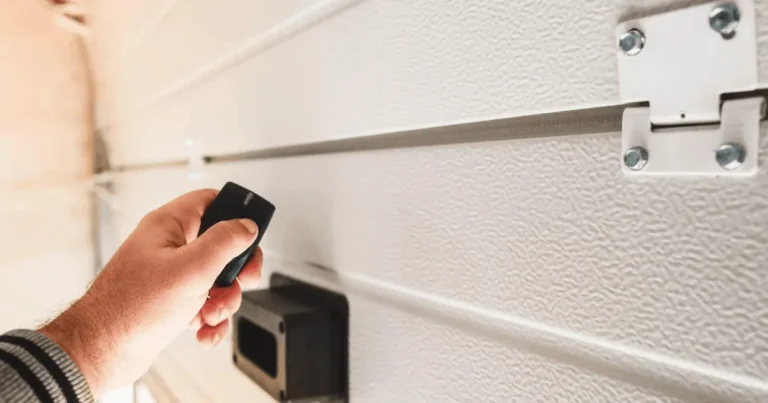How do you fix cabinet drawers that won’t stay closed?
Are you tired of dealing with drawers that refuse to stay closed? It can be frustrating and inconvenient, not to mention a potential safety hazard. But fear not! We will explore the common causes of sliding drawers and provide you with practical tips on how to fix them for long-lasting functionality. Whether it’s adjusting and aligning the drawer mechanisms or repairing and reinforcing the components, we’ve got you covered. So let’s dive in and discover how to bring those stubborn drawers back on track!
Understanding the Cause of Sliding Drawers
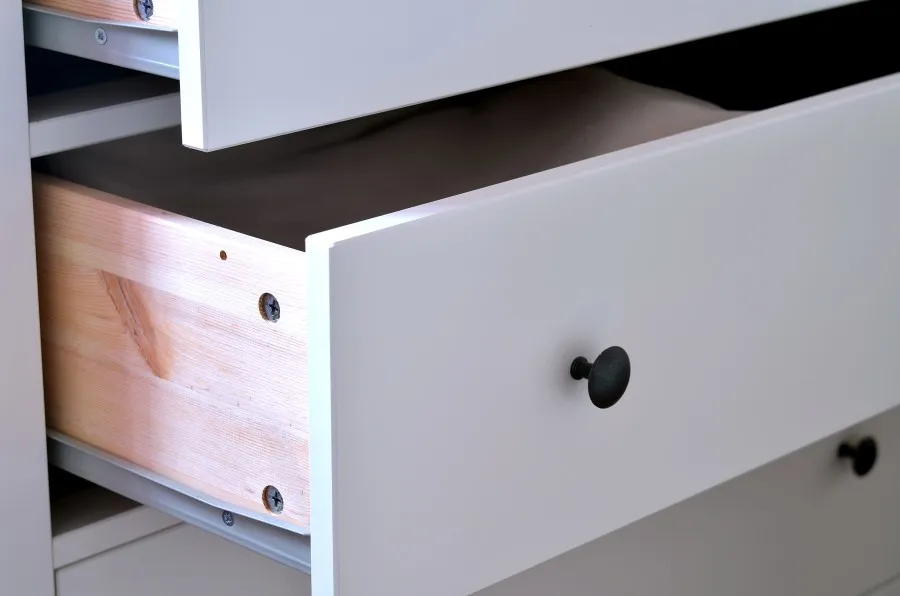
Sliding drawers can be a common issue in cabinets and furniture, causing frustration and annoyance. But what causes these drawers to slide open on their own? One reason could be misalignment or improper installation of the drawer tracks. When the tracks are not parallel or level, it can lead to a poor fit and result in sliding drawers. Another potential cause is worn-out or damaged drawer slides, which may prevent them from securely holding the weight of the contents inside.
It’s essential to identify the root cause before attempting any fixes. By understanding why your drawers slide open, you’ll be better equipped to find appropriate solutions that will restore functionality and ensure your belongings stay safe and secure within your cabinets.
Exploring Common Reasons for Sliding Drawers
When it comes to sliding drawers, there are a few common culprits that can cause them to misbehave. One of the most frequent reasons is simply overloading the drawer with too much weight or stuffing it with items that don’t fit properly. This can put a strain on the slides and make them difficult to open or close smoothly.
Another potential issue is poor installation or wear and tear over time. If the drawer tracks are not aligned correctly, it can lead to uneven sliding and frustration. Additionally, worn-out or damaged drawer slides can also contribute to problems with functionality.
It’s important to identify these common issues early on so you can take steps to address them before they worsen. By understanding these reasons for sliding drawers, you’ll be better equipped to troubleshoot and fix any issues that arise in your cabinets.
Analyzing Potential Drawer Hardware Issues
When it comes to sliding drawers, various hardware issues could be causing the problem. One common culprit is worn-out or damaged drawer slides. Over time, these slides can become loose or misaligned, resulting in a drawer that doesn’t slide smoothly or stay closed properly.
Another potential hardware issue to consider is the condition of the drawer tracks. If the tracks are bent, warped, or have debris blocking them, they can hinder the smooth movement of the drawer. It’s important to inspect and clean these tracks regularly to ensure optimal functionality.
In addition to slide and track problems, faulty drawer glides can also contribute to sliding issues. These glides may wear out over time or become damaged from excessive weight placed on them. By analyzing and addressing any potential hardware issues affecting your drawers’ function, you can take steps toward achieving long-lasting functionality for your cabinets!
Adjusting and Aligning the Drawer Mechanisms
Adjusting and aligning the drawer mechanisms is crucial for ensuring smooth functionality. Misaligned tracks and slides can cause drawers to stick or slide open on their own, leading to frustration and potential damage. To realign the drawer tracks, start by removing the drawer completely. Then, examine the tracks for any obstructions or debris that may be hindering proper alignment. Use a screwdriver or Allen key to adjust the screws on either side of the track, making small adjustments until the track is level.
Next, focus on adjusting the tension of the drawer slides. If your drawers are sliding open too easily or are difficult to close fully, it’s likely due to improper tension. Use a screwdriver to tighten or loosen the adjustment screws that can be found at the front of each slide. Be sure to test each adjustment before moving on to the next one.
By taking these steps and fine-tuning your drawer mechanisms’ alignment and tension, you’ll ensure they function smoothly for years to come without any annoying hitches along the way!
Realigning the Drawer Tracks
One common reason why drawers slide open or become difficult to close is due to misaligned tracks. Over time, the drawer tracks can shift out of place, causing the drawer to roll off track or not fully extend. To realign the drawer tracks and restore smooth functionality, follow these simple steps.
First, remove the contents from the affected drawer and pull it out. Take a closer look at the tracks on both sides of the cabinet and assess if there are any visible obstructions or debris that may be hindering proper alignment. Clear away any dirt or objects that may be blocking the path of the drawer. Next, gently push in one side of the drawer while pulling out slightly on the other side to guide it back into its proper track position. Repeat this process for both sides until you feel and hear a satisfying click as each part locks into place.
Remember, taking care of misaligned tracks promptly will ensure your drawers continue to function smoothly for years to come!
Adjusting the Drawer Slide Tension
One common reason for sliding drawers is improper tension in the drawer slides. When the tension is too loose, the drawer may slide open on its own or not stay closed properly. On the other hand, if the tension is too tight, it can make it difficult to open or close the drawer smoothly.
To adjust the drawer slide tension, start by removing any items from the inside and gently pulling out the drawer completely. Locate the adjustment screws on either side of each slide and use a screwdriver to tighten or loosen them accordingly. It’s important to make small adjustments and test the movement of the drawer after each change until you find an optimal level of tension that allows for easy opening and closing without any unwanted sliding.
Remember, finding just the right amount of tension may take some trial and error, but with patience and careful adjustments, you can achieve long-lasting functionality for your drawers!
Repairing and Reinforcing the Drawer Components
When it comes to repairing and reinforcing the components of your drawer, there are a few steps you can take to ensure long-lasting functionality. First, if you notice loose or broken drawer slides, it’s important to fix them promptly. This may involve tightening screws or replacing damaged parts.
Next, consider strengthening the walls and bottoms of your drawers. Over time, these areas can become worn or weakened, leading to sliding issues. Reinforcing them with additional supports or sturdy materials can help prevent future problems.
Remember, taking care of your drawer components is crucial for maintaining their functionality. By addressing any repairs needed and reinforcing weak areas, you’ll be able to enjoy smooth opening and closing for years to come.
Fixing Loose or Broken Drawer Slides
When it comes to fixing loose or broken drawer slides, there are a few simple steps you can take to restore functionality. First, carefully remove the drawer from its housing and inspect the slides for any visible damage or looseness. If the slides are loose, tighten any screws or bolts that may be causing the issue. If they’re broken, you’ll need to replace them with new ones.
Next, check for any debris or dirt that may be hindering smooth sliding. Use a brush or cloth to clean out any buildup in the slide tracks. Apply a lubricant such as silicone spray or wax along the tracks and on the rollers of the drawer itself. This will help reduce friction and ensure smooth movement when opening and closing your drawers.
Fixing loose or broken drawer slides doesn’t have to be complicated. By taking these simple steps, you can quickly restore functionality and prevent further damage to your drawers.
Strengthening Drawer Walls and Bottoms
One important aspect of ensuring long-lasting drawer functionality is to strengthen the walls and bottoms of the drawers. Over time, these components can become weak or damaged, leading to sliding issues.
To strengthen the walls, you can add additional support by attaching metal brackets or corner braces to reinforce the corners and edges. This will provide extra stability and prevent the sides from bowing or sagging. Additionally, consider using stronger materials for drawer bottoms, such as plywood, instead of particle board. Reinforcing these areas will help maintain the structural integrity of your drawers and prevent them from becoming misaligned or difficult to slide in and out of smoothly.
By taking proactive measures to strengthen your drawer walls and bottoms, you can ensure that they withstand daily use without compromising their functionality.
Applying Lubrication and Maintenance Techniques
To keep your drawers sliding smoothly, it’s important to apply lubrication and perform regular maintenance. Start by lubricating the drawer slides and rollers with a silicone-based spray or a specialized drawer slide lubricant. This will reduce friction and allow the drawers to glide effortlessly.
In addition to lubrication, proper cleaning and care are essential for long-lasting functionality. Regularly clean the inside of the drawers using a mild soap solution, taking care not to use abrasive cleaners that can damage the surfaces. Wipe away any dust or debris from the drawer tracks to prevent buildup. By incorporating these simple maintenance techniques into your routine, you’ll ensure that your cabinet drawers stay in top-notch shape for years to come.
Lubricating Drawer Slides and Rollers
When it comes to maintaining the functionality of your drawers, proper lubrication is key. Lubricating drawer slides and rollers ensures smooth gliding motion, reducing friction and preventing wear and tear on the hardware.
To start, gather a silicone-based lubricant or powdered wax. Apply a small amount to the tracks where the drawer slides in and out. Be sure to distribute it evenly along the entire length. Next, move the drawer back and forth several times to work on the lubricant. This will help loosen any stuck parts and improve overall movement. Remember to also lubricate any roller mechanisms on the bottom of your drawers for optimal performance.
By taking a few minutes to properly lubricate your drawer slides and rollers, you can extend their lifespan and enjoy hassle-free operation for years to come! So grab that lubricant and get those drawers gliding smoothly again!
Proper Cleaning and Care for Smooth Functionality
To ensure the long-lasting functionality of your drawers, it’s essential to give them regular cleaning and care. Start by removing all items from the drawer and wiping away any dust or debris with a soft cloth. For stubborn grime, use a mild soap solution or furniture cleaner. Avoid using harsh chemicals that can damage the drawer surfaces.
Next, pay attention to the drawer slides and rollers. These components are crucial for smooth opening and closing. Use a small brush or toothbrush to remove any dirt or buildup from the tracks. Once clean, apply a lubricant specifically designed for drawer mechanisms to reduce friction.
Taking good care of your drawers also means being mindful of their weight capacity. Avoid overloading them, as this can strain the hardware and lead to sliding issues. Additionally, consider lining your drawers with non-slip liners to prevent items from shifting around during use.
By regularly cleaning and maintaining your drawers, you’ll not only keep them looking great but also ensure they function smoothly for years to come!
Preventing Future Drawer Sliding Issues
Installing Safety Locks or Latches
One effective way to prevent future sliding issues is by installing safety locks or latches on your cabinet drawers. These simple yet sturdy mechanisms can help keep your drawers securely closed, preventing them from opening unexpectedly and causing potential damage. Safety locks or latches come in various styles and designs, so you can choose the option that best suits your needs and complements the aesthetic of your cabinets.
Organizing and Distributing Drawer Contents
Another key aspect of preventing drawer sliding issues is the proper organization and distribution of contents within the drawers. When items are haphazardly placed inside a drawer, they can shift around during opening and closing, leading to imbalances that affect smooth functionality. By organizing items neatly using dividers or containers specifically designed for drawers, you can ensure that everything stays in its place. Additionally, distributing heavier items evenly throughout the drawer’s space will help maintain balance and reduce strain on the slides or tracks.
Remember, prevention is always better than dealing with problems after they arise. By taking these proactive steps to prevent future sliding issues with your cabinet drawers, you’ll be able to enjoy their functionality for years to come!
Installing Safety Locks or Latches
When it comes to keeping your drawers securely closed, installing safety locks or latches is a smart move. These simple yet effective devices provide an extra layer of protection, preventing drawers from sliding open unexpectedly. Whether you have curious children roaming around or simply want to avoid potential accidents, safety locks, and latches are essential for maintaining long-lasting drawer functionality.
With a wide variety of options available on the market, finding the right safety lock or latch for your drawers is easy. From magnetic locks that offer invisible security to spring-loaded latches that ensure tight closure, there are solutions to fit every need. By investing in these inexpensive and practical accessories, you can enjoy peace of mind knowing that your drawers will stay securely closed at all times.
Organizing and Distributing Drawer Contents
Properly organizing and distributing the contents of your drawers is a crucial step in maintaining long-lasting functionality. By keeping items neatly arranged, you can minimize strain on the drawer mechanisms and reduce the likelihood of sliding issues.
Start by decluttering your drawers regularly. Remove any unnecessary or unused items to create more space and prevent overcrowding. This will not only make it easier to find what you need but also lighten the load on the drawer’s hardware.
Consider using dividers or organizers to separate different categories of items within each drawer. This will help prevent them from shifting around during opening and closing, which can put additional stress on the slides or tracks.
When placing heavier objects in a drawer, distribute their weight evenly across the bottom surface. Concentrated weight in one area can cause imbalance and potentially lead to misalignment or damage over time.
Another useful tip is to avoid overstuffing your drawers beyond their capacity. If a drawer feels excessively heavy when pulling it out, remove some items until it moves smoothly again. Remember that maintaining proper balance is key to smooth functionality.
Take care when closing drawers with fragile or delicate objects inside. Slamming them shut can cause unnecessary jarring movements that may affect both the contents and the overall performance of the drawer mechanism.
By following these tips for organizing and distributing your drawer contents, you’ll not only enhance their longevity but also improve your daily experience using them!
Remember, taking proactive steps toward preventing future sliding issues will save you time, frustration, and potential replacement costs down the road. With routine upkeep, necessary modifications, and cautious consideration of your daily usage, your drawers ought to keep working perfectly for many years to come!
